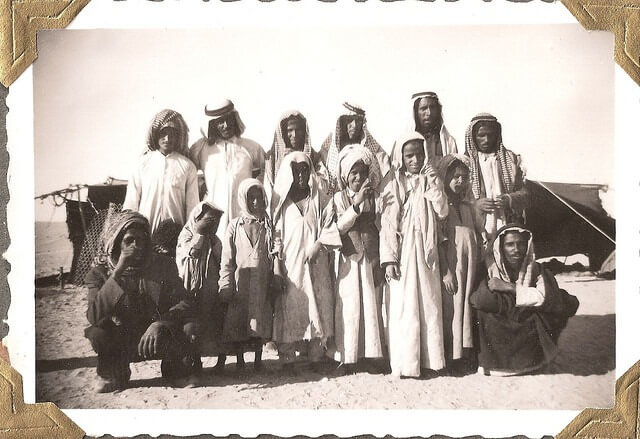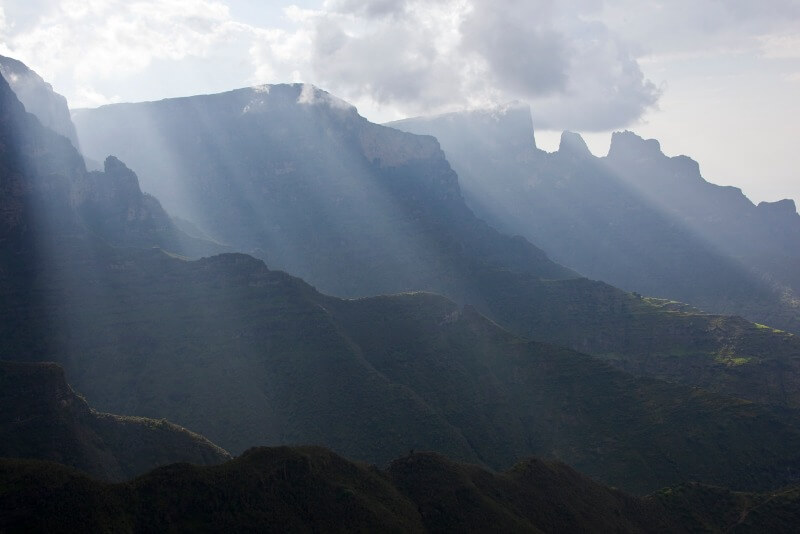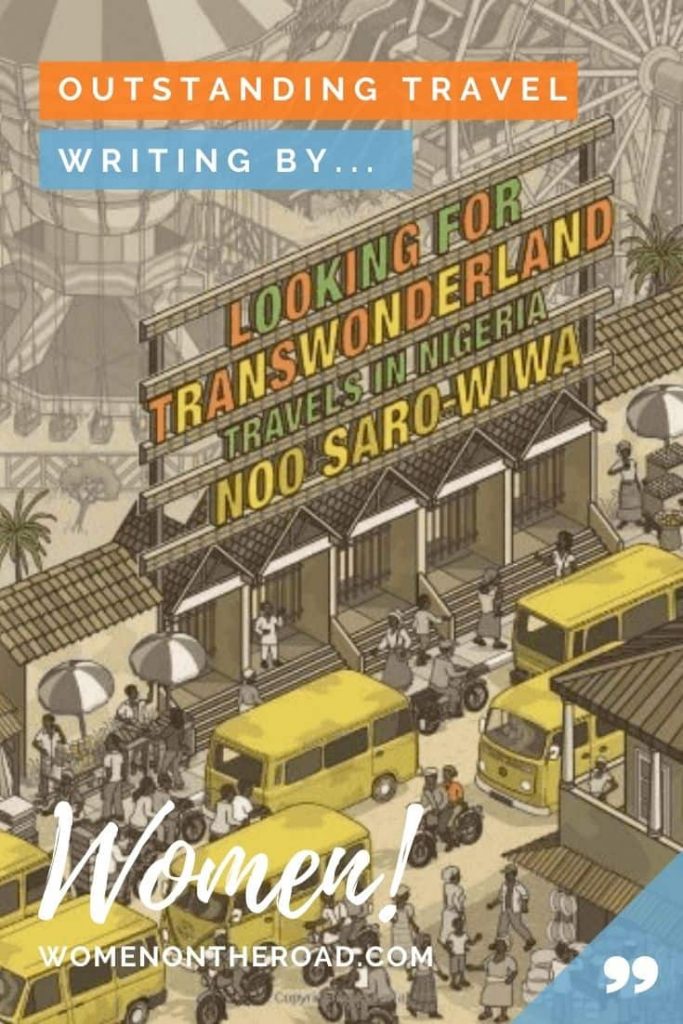Why is it that men seem to write most travel books?
Are there so few outstanding women travel writers?
Absolutely not!
It is true, men have benefited from privilege and position: they could travel more freely than women, they were often more educated, and they didn’t face the stigma of having their words and thoughts laid out in public.
You’ll be surprised though: there were plenty of women travel writers in the past.
And, there are even more today as female travel writers come into their own.
Literary history is filled with the travel writing of women, some dating back to Antiquity. Most women who traveled and wrote about it were escorting their husbands and only recently did women start to travel unaccompanied. Back then, they rarely traveled for travel’s sake, but if you search enough, you’ll unearth some early women’s travel writing from all over the world – Japan, Afghanistan, Greece, England.
Wherever women traveled, they wrote.
Women’s travel writing became more common as the centuries passed and women traveled more.
As travel horizons widened and rail travel expanded, women increasingly took to the road – some so adventurous they strayed far off the beaten path, lived with Bedouin tribes, crossed inhospitable mountains on muleback, or changed the course of history.
I’ve always been fascinated and inspired by women who make their living travel writing – so much so that I’ve had a modest go at it myself, first as a journalist, and now with this website, which satisfies a bit of my wanderlust.
Don’t you find there’s something romantic, daring or even spiritual about discovering a new place (new at least to you)? Even solitude has its glow, providing time to think and just be, especially if you are traveling solo.
Throughout the ages, women have traveled and written about their experiences, from records of pilgrimages and family trips in Antiquity and the Middle Ages, to documenting the exploits of modern-day journalists.
Whether for pleasure, transformation or work, the stories of these women travelers are an inspiration for modern women who venture off the beaten track.
Travel writing by women is more than about places – it’s about how women cope with being women in a foreign land. There’s also plenty of garbage out there, abetted by the ease with which we can post a blog or send an email.
The best women’s travel writing is like any other kind of great writing: it takes practice and it’s a skill that must be honed. In the same way picking up an iPhone does not a photographer make, you don’t become a writer by knowing how to type and getting on a plane.
Like all skills, some are born with it, others have to learn it.
The flip side of modernity is that today, we have access to an unthinkable variety of resources filled with superb travel writing examples.
And this is what we are here to explore.
Early women’s travel writing
Early travel writing by women isn’t quite a genre, and admittedly there were few female travel writers in ancient times.
Those women who could write tended not to travel – they were often nuns. Those who did travel usually did so with their husbands – and often couldn’t write. At times we have to read books by men to find out about women who traveled…
But there were exceptions, like Ban Zhao, the first female historian from China, or Lady Sarashina of Japan, a courtesan who traveled around the country with her husband and wrote of her voyages, perhaps the earliest female travel writer.
Others followed, like Medieval English mystic and writer Margery Kempe, and 16th-century Mughal princess Gulbadan Bigam from Afghanistan. These women, who often lived at court or were at least well-off, wrote mostly of their pilgrimages or of travels with their husbands.
17th-19th centuries: women travel writers emerge
Sometime around the 17th century, female travel writing began to portray women traveling on their own or simply for pleasure. The Frenchwoman Marie Catherine le Jumel de Barneville, Baronness d’Aulnoy, traveled extensively in Spain and England and wrote her most popular works based on these trips.
But it would take the 18th century to witness a dramatic proliferation of travel writing by women – again, largely because more women were learning to write.
Travel was also becoming more common, for leisure as well as business. Women often accompanied their husbands on trips and had plenty of free time to write their memoirs and tales of travel. As transport improved, people began to travel further – especially the English, who wandered not only to the sunny South of Europe but far afield to Africa and Asia.
A wave of intrepid English women travelers left its mark on literature during this period.
Elizabeth Craven wrote about her travels through Crimea and Constantinople – and her description of the Ottomans was scathing: they were clumsy, lazy, politically corrupt, corpulent – and Turkish coffee was bad.
The editorial (as opposed to descriptive) style of writing was being shaped but often, the new lands fared badly when compared with home, an ethnocentricity that is still common today.
Thankfully, not everyone was this critical.

Mary Wollstonecraft, an early women’s advocate and philosopher, traveled to Scandinavia, describing the breathtaking scenery and her connection to it. She wasn’t primarily known as a travel writer but as an early feminist, who – a revolutionary thought – believed men and women were equal and that women only seemed less able because they lacked the education men enjoyed.
Mariana Starke wrote the first European travel guide, and May Crommelin, from northern Ireland, traveled much further, to the Andes, the Caribbean and North Africa.
The mid-19th century welcomed the emergence in Britain of Mary Seacole, of Jamaican origin, and her “Wonderful Adventures of Mrs. Seacole in Many Lands”, which retraced her travels in Panama and in Crimea, where she served as a nurse during the Crimean War. Hers was the first autobiography by a Black woman in Britain.
Britain did not hold the monopoly of female travel writers. Witness the irrepressible Nellie Bly, an American investigative journalist who convinced her editor to send her around the world in the footsteps of Jules Verne’s fictional Phileas Fogg, the protagonist of Around the World in 80 Days. She made it in 72.
As the century came to an end, many emerging women writers were chronicling their travels and making a name for themselves in various ways.
Gertrude Bell, for example, influenced the course of Middle Eastern politics (she negotiated the border between Iraq and Jordan) and wrote extensively about the region’s tribes, in such well-known books as Queen of the Desert.
Isabelle Eberthardt, a Swiss writer, became known for other reasons. She fell in love with North Africa and moved to Algeria, leading a short but tumultuous life, much of it dressed as a man or evading the authorities or assassination attempts.
Little by little, women traveled and wrote about their experiences – and gained fame and acceptance.
Intrepid women travel writers: the 20th century
The intrepid women travel writers of the 20th century were as affected by the expansion of air travel as were their earlier sisters by 19th-century rail travel.
Women traveled more for work, and became increasingly independent. From that freedom was born women’s travel writing that continues to amaze by its honesty and richness.

Dame Freya Madeleine Stark was one of the first Western women to travel through the Arabian deserts. She often traveled alone into areas where few Europeans – and even fewer women – had ever been.
Frenchwoman Alexandra David-Neel made history in the early 1900s by walking, disguised as a male beggar, from China across Tibet and into the forbidden city, which she was the first Western woman ever to enter. She lived more than a century – and surprised her local authorities by requesting a new passport at the ripe old age of 100!
Another of the inspiring and intrepid women travel writers and one of my favorites is the Swiss Ella Maillart, known as Kini to friends. A pro-level skier and sailor, Maillart died in 1997 at the age of 94, having criss-crossed Asia a number of times. Whether in Moscow with Countess Tolstoy or across Central Asia on her own (read Turkestan Solo), she brilliantly documented her trips in words and pictures – the quintessential 20th-century photojournalist.
That said, if you get the feeling the early 20th-century female travel writing world was exceedingly white, you would not be wrong. Most were indeed white, whether for reasons of colonization, society, privilege or income. Yet women of color who were able to travel did so and wrote about their experiences.
Take Juanita Harrison, who became a bestselling author after publication of her autobiography, “My Great, Wide, Beautiful World,” a collection of letters she wrote from her travels in Europe and South America.
Or Zora Neale Hurston, an African American anthropologist who wrote about race, delving deeply into cultures and documenting her travels around the Caribbean and the American South.
But yes, there were few.
As the century marched on, more and more women traveled for work, often as journalists, and wrote about it.
A classic travel writer of the 20th century was Rebecca West, whose book about the Balkans, Black Lamb and Grey Falcon, is still a must-read for budding travel writers today. What I love about her is the mixture of travel with history and politics, a journalist as I love them.
Another fantastic journalist of the period was Martha Gellhorn, also a novelist (and once married to Ernest Hemingway). She reported on most of the century’s major conflicts and events including the Spanish Civil War and Adolf Eichmann’s trial. Of her many books, one I truly enjoyed was her memoir, Travels With Myself and Another.
More recently, modern-day journalists such as Kate Adie, former Chief News Correspondent of the BBC, have chronicled their travels. Adie brilliantly documented some of the major conflicts of the latter part of the 20th century – Rwanda, Yugoslavia, Tiananmen Square, Sierra Leone – in her first book, the autobiographical The Kindness of Strangers.
I’d like to bring the 20th century to a close by mentioning two of my absolute favorite travel writers: one is MKF Fisher, who was more of a food writer than a travel writer but whose writing often included her journeys. Perhaps this piece by the top food writer Ruth Reichl paints her the best.
The other is the prolific Dervla Murphy – the older she gets the more intrepid, it seems! Her autobiography, Wheels Within Wheels, tells it all. Born in 1931, she cut her travel teeth on bicycle trips across Europe but graduated to world-class journeys when one blustery day in 1963 she set off on Roz, her Armstrong Cadet, to cycle from Ireland to India. She hasn’t stopped since. I’ve had the privilege of almost running into her twice on my travels, once in Uganda and once in Laos. I admit I took advantage of that coincidence to write to her – and to my amazement I received a lovely typewritten postcard back!
As I flew low in a tiny plane over the spiky Simien Mountains in Ethiopia one day, I looked down in awe, recalling Dervla’s In Ethiopia With a Mule, wondering how she ever made it across equipped only with a pack animal. And in Uganda and Kenya, I was reminded of The Ukimwi Road, which documented the spread of AIDS along Africa’s trucking routes – written when that epidemic was still new.

21st century women travel writers
Today’s young (and less young) contemporary women travel writers – writers who write of a place from any perspective – are in every way as inspirational as the women who preceded them.
Some of these writers are still early in their careers and we can expect so much more from them! Others can already boast of being prolific…
Take Elizabeth Gilbert, who in her twenties began winning awards most of us would be content to have at the end of our careers. Her memoir of a year’s personal exploration, Eat, Pray, Love: One Woman’s Search for Everything, Across Italy, India and Indonesia, got her onto the New York Times bestsellers’ list and has become a major Hollywood movie.
And Cheryl Strayed, whose travel memoir Wild: From Lost to Found on the Pacific Crest Trail gave many of us shivers as she pushed herself to hike alone through many miles of inhospitable, desolate land.
I remember being riveted to my seat by Chimamanda Ngozi Adichie’s Half of a Yellow Sun, which uses finely honed characters to spin the story of Biafra’s fight for independence, something I only remembered from old newspaper clippings. She is not a traditional travel writer, and uses fiction to get her point across. Nonetheless, by the time you’ve finished this book, your sense of place has sharpened to a point.
Another contemporary Nigerian writer – more traditionally about travel this time – is Noo Saro Wiwa. If you’ve ever been to Nigeria, you’ll recognize every little snippet in Looking for Transwonderland. Noo was brought up in England, the daughter of murdered environmental activist Ken Saro Wiwa, and Nigeria was a place she used to be ‘shipped off to for summer vacations’… until she grew to love it through her explorations.
And that ends my list for now, sadly incomplete, but I’m pleased to see many new female travel writers are breaking ground today. Some have won awards, others are still emerging, and perhaps soon, whenever lists of the best travel books and writers are published, they will contain at least as many women as they do men.
I updated this piece on 13 October 2020 with additional research and with information provided by award-winning writer Amy Gigi Alexander, Editor-in-Chief of Panorama, The Journal of Intelligent Travel.
— Originally published on 30 October 2014
PIN THESE PICTURES AND SAVE FOR LATER!



